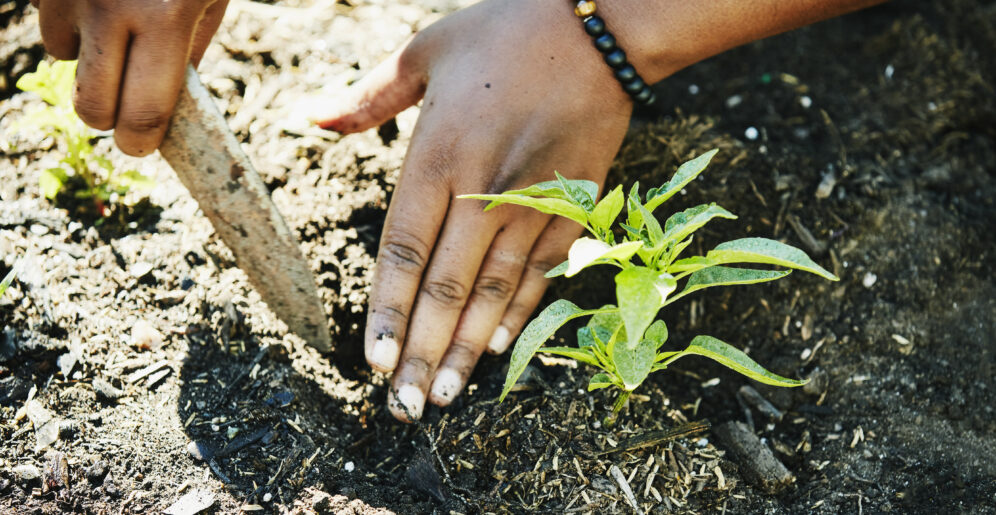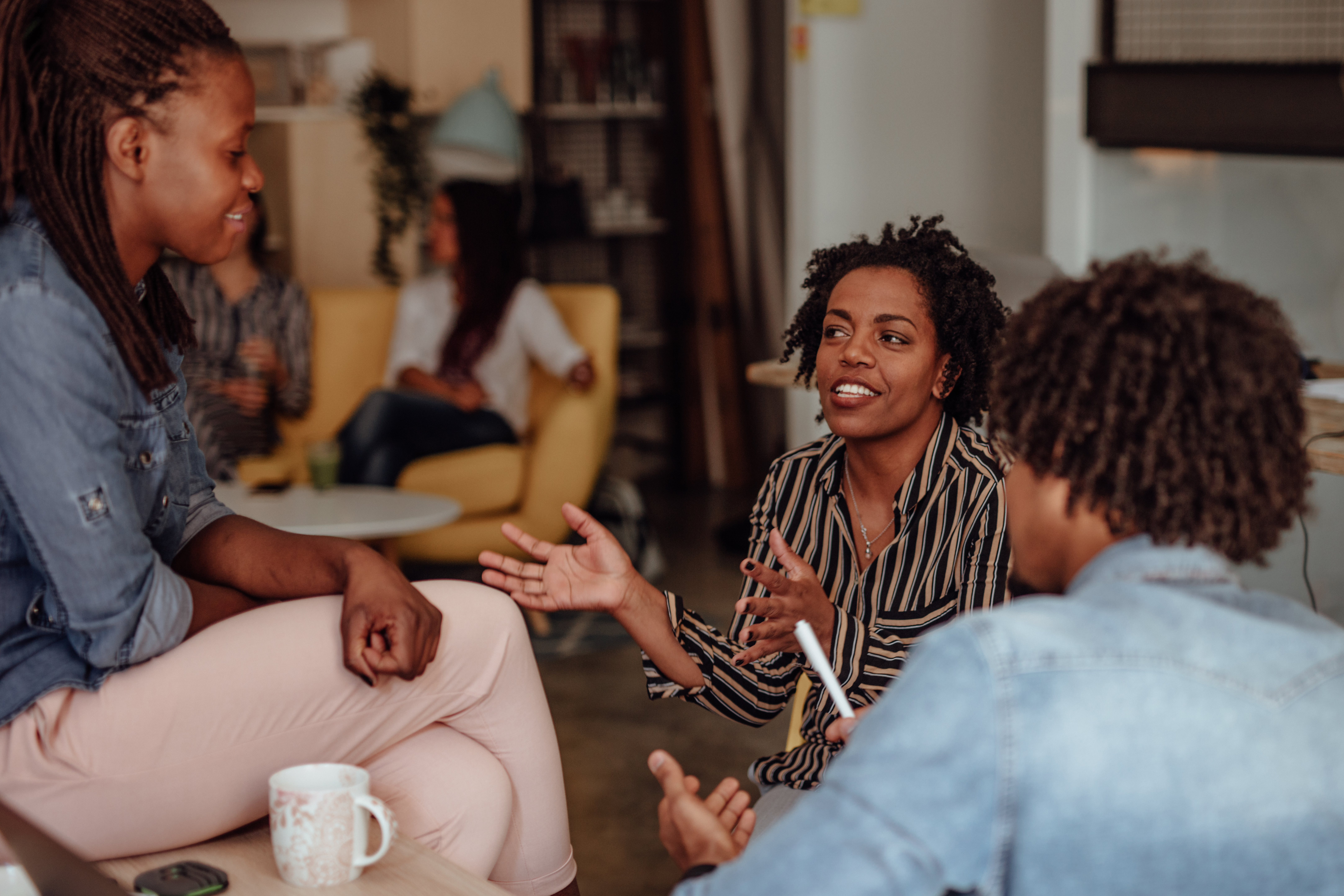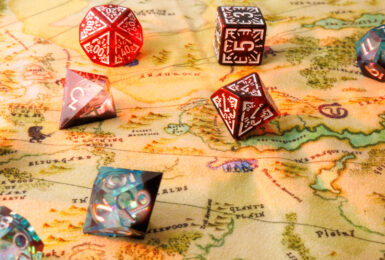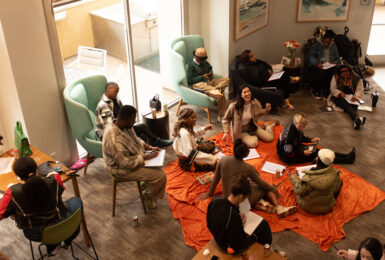
Culture
From Punk To Plants: What The Next 20 Years Of AFROPUNK Wellness Could Look Like
Afro merging with punk was bigger than Black folks joining the music scene and thrashing around in mosh pits. It was paved by great artists looking to be heard, and with each guitar riff, we can remember that punk is a revolutionary movement. A state of being, a way of living, and claiming “I will not be a mindless sheep” or “worker bee” to the powers that be. When we become complacent in our pursuit of collective liberation, we lose the fight for future generations. To honor Afropunk, we must embrace our rebellious nature, question the norm, and fight against systems of injustice while paving the way for new forms of resistance. The people are the power, and when we join forces to establish new paradigms of community, real results happen. The new American dream isn’t just to collect the bag; it’s about fleeing the country to steward land, sustainability, and community living with friends to cultivate generational wealth. We’re clearly having a tower card moment in the world. The systems are crumbling as the collective calls for change, and activists are rising up. Makes you wonder what the next 20 years of Afropunk looks like?
In the words of Malcom X, “Armed with the knowledge of our past, we can with confidence charter a course for our future. Culture is an indispensable weapon in the freedom struggle. We must take hold of it and forge the future with the past.” Our strength comes from our ancestral wisdom, before the colonization and the pain-ridden spree of capitalism that has consumed our world, aiding genocides and starvation in Palestine, Sudan, and the Congo. To be punk is to have a natural opposition to authority. The future of Afropunk must contribute ways to self-govern ourselves for true liberation from policies of oppression and corrupt politicians looking to silence the consciously outspoken rebels that we are. In America, we’re still calling for reparations, but instead of expecting the government to give us our 40 acres and a mule, Black people are making their own path for justice, like in Georgia, where 19 families purchased 97 acres to live together. The BIPOC community is redefining what it is to tend to land as an act of resistance. Homestead mommies are in, along with getting back to our roots as a way to support our legacy moving forward. Bush tea isn’t just in Jamaica these days, as the millennials down herbal brews to keep calm. We’re just trying to remember grandma’s recipes to remain grounded in these times and the way our ancestors protected us throughout history.
Staying healthy helps us in our fight for freedom, from the food we eat that affects our mental health to the content we consume daily. Imagine Afropunk evolving into a living, breathing sanctuary. A collective where resistance looks like food justice, ancestral wisdom, plant medicine, sovereign self-expression, and regenerative community living in eco-villages off the grid. We don’t have to look far for examples of communities paving the way for future land stewards and mental health wellness.. Soul Fire Farm, an “Afro-Indigenous centered community farm and training center dedicated to uprooting racism and seeding sovereignty in the food system,” in upstate NY, is dedicated to fostering the next generation of BIPOC farmers versed in regenerative agroecology. Therapist Patricia Duggan, known as Pat, who identifies as “bi-cultural with Afro-Caribbean and Latin influences,” is reimagining mental health with her company Liberatory Wellness Network (LWN), where she teaches somatic practices. LWN is a “community-powered directory” of holistic practitioners and therapists dedicated to radical care, offering alternatives to “colonial healthcare systems” while focused on disability justice, racial equity, and 2SLGBTQIA+ advocacy.
Crysta Bloom contributes her storytelling as the co-host and co-producer of Soul Fire Farm’s Sovereign: Reclaiming Black Land podcast. A somatic practitioner Crysta, reminds us that “Our people have long turned to the land as a wellspring of wisdom and belonging.” She continues, “When we return to the land as stewards, as homesteaders, we reclaim what has always been ours. In doing so, we resist the systems designed to keep us disconnected and disembodied, and we begin to remember the truth of who we are.” Pat explains how LWN helps those that need it most, “In a world that often asks us to shrink, my role is to co-create space where we can reclaim our bigness, our rage, our joy, and our grief as sacred.” Her work “supports community resilience” providing a safe place for “PoGM disabled, queer, and system-impacted folks, to be held without needing to explain, justify, or regulate themselves to be worthy of care.” Founder Duggan explains, “Our work at LWN isn’t about ‘bringing mental health’ to the people, it’s about returning care to the communities that have always known how to heal, but were systemically denied the resources, language, or spaciousness to do so on their own terms.”
As an herbalist and medicine woman of over 12 years, there is nothing better than having the knowledge to heal myself. As a 5-year-old child, I was making my own medicine and strongly believed the Earth had everything we needed to survive. Crysta shares,“Reclaiming our ability to feed and heal ourselves isn’t just a radical act, it’s a deeply human one. She recalls how helpless she felt when her children were babies, “I felt powerless, disconnected from my own knowing.” Tired of constant doctor visits for minor colds and rashes, she was inspired to learn herbalism. “I began to reclaim an ancestral wisdom, the kind that knows how to care for our children without relying on systems that often fail to see us,” Bloom says. Can you hear the blaring alarm to wake up, as billionaires buy up farm land and build food bunkers? The children are screaming for us to stand up for a new tomorrow. A world without GMO food, loaded with pesticides, or organic food sprayed with Apeel thanks to Bill Gates. It’s time to take back our power and relearn the indigenous ways of sustainable community living in harmony with the planet. Crysta chimes in that, “For many of us, the call to return to the land arrives long before the land-based skills do. This path is not meant to be rushed,” Bloom explains the process, “requires us to unlearn so many layers of perfectionism, capitalism, and ego. Tools of white supremacy, and that is such a gift if we allow it to be.”
Slowing down to meet the pace of the Earth in this hyper-productive world, promoting burnout is another way to stick it to the man. Patricia currently supports people to do just that, “We explore how the body has adapted,through tension, freeze, urgency, or collapse, and begin to build a relationship with those patterns that aren’t rooted in judgment.” When our nervous systems are regulated and calm, we move from a centered place, allowing us to be more strategic in bringing our vision for collective liberation to light. Pat, who has lived with chronic illness since age 18, continues, “Somatic work offered me a way back to myself. It gave me a language for sensation, a framework for understanding dissociation not as dysfunction but as wisdom, and the tools to move through trauma without betraying my pace.” Pat highly recommends My Grandmother’s Hands by Resmaa Menakem, claiming “It’s one of the most powerful books I’ve read on how white body supremacy and racialized trauma live in the nervous system, and how healing requires not just personal work, but collective, embodied transformation.”
Picture an Afropunk festival with soundbath temples instead of sound stages, Afro-Indigenous land stewardship panels, climate grief cacao ceremonies, and trauma integration zones all woven into a vibrant celebration of Black creativity and collective care. Pat dreams of “Nervous system education booths designed specifically for BIPOC artists, organizers, and creatives who are moving through grief, burnout, or hypervisibility.” Crysta envisions “an embodied future for us. In 20 years, I see our fullest expressions of joy and grief being held in warm, safe spaces. I see our thriving communities living on and with the land. Each one of us a living reflection of our ancestors’ love and devotion.” Pat adds, “All I know is that the future of wellness is not white. It’s rooted in connection, consent, community, and cultural remembering.”I see the stages lined with revolutionaries, smell the sage burning, and hear the survival workshops on living sustainability off the grid. “The land is a patient teacher. She shows us, again and again, how to live in reciprocity, in mutual care, reverence, and respect,” Bloom concludes. Knowing how to tend to the land, grow our own food, and make our own medicine without depending on exploitative systems is the only way forward.
Get The Latest
Signup for the AFROPUNK newsletter




